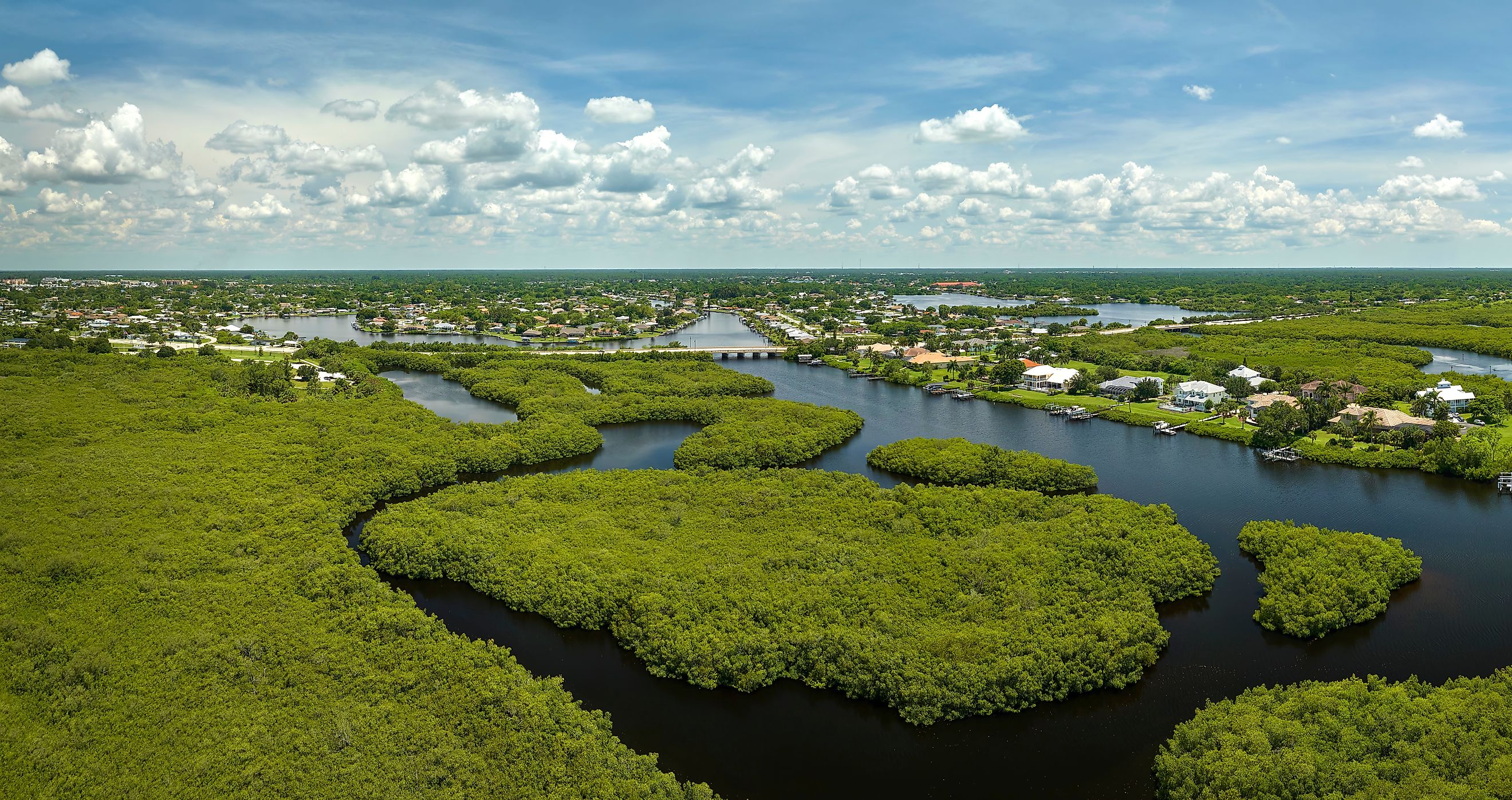
Are Burmese Pythons Going To Invade More States Beyond Florida?
Sizable and insatiable Burmese pythons (Python molurus bivittatus) have overrun America's Everglades. But even though these Southeast Asian snakes constitute one of the worst cases of invasive species on the planet, they have (thus far) been contained to the southern third of Florida. With that said, they continue to explore the outer reaches of their viable, though unnatural, three-million-acre habitat - sneaking further away from their national park epicenter by multiple miles each year. This, therefore, begs the question: are Burmese pythons going to start showing up in northern Florida? How about other regions of the southeastern United States?
Where Exactly Are Florida's Burmese Pythons?
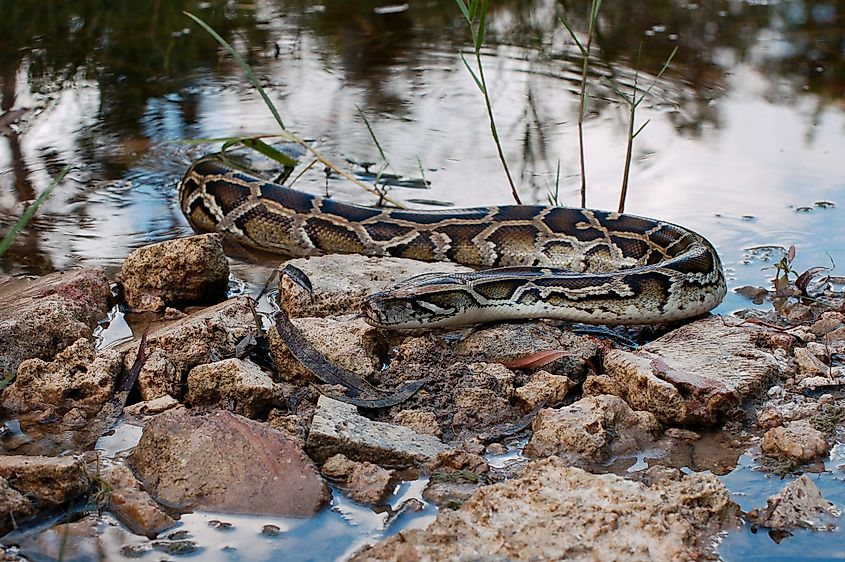
What began as a single snake caught in the wild in 1979 progressed to an established breeding population of several hundred in the early 2000s. Now, the Florida Fish and Wildlife Conservation Commission estimates that there are hundreds of thousands of Burmese pythons lurking within the Everglades. As these apex predators grew in size (some reaching nearly twenty feet in length and eclipsing 200 pounds) and overall numbers, their territory naturally had to expand. Initially, they were confined to a small part of the 1.5-million-acre Everglades National Park, but now they have slithered deeper into the Everglades watershed (an area covering three million acres) and are even encroaching on urban areas. The FWC states that Burmese pythons are established from Key Largo up to just south of Lake Okeechobee and from the western portion of Broward County into Collier County.
When authorities use the term "established," they mean that these snakes are living and breeding in the wild. There are, however, reports of Burmese pythons that have been captured, or at least sighted, beyond the officially recognized region. For instance, the Fort Myers News-Press cites cases of these powerful constrictor snakes crossing the Caloosahatchee River (just north of Fort Myers) and making their way into the Port Charlotte and Cape Coral areas. They have also squeezed further west into Cape Coral and Pine Island.
The fact that Burmese pythons have been found in these areas is not disputed, but how they arrived there is still in question. Did they venture out from their breeding base, or are these additional cases of abandoned or escaped exotic pets? This leads us to our next natural query.
How Did Pythons Get in the Everglades in the First Place?
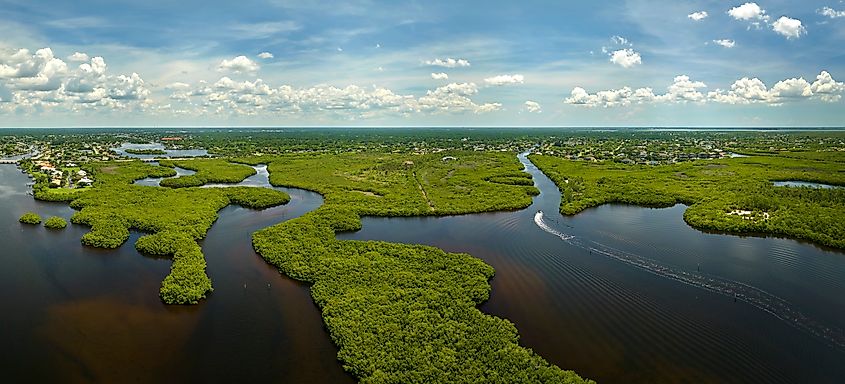
Aerial view of the Florida Everglades.
Burmese pythons are distributed throughout parts of Northeastern India, Southeast Asia (particularly Thailand's Malay Peninsula), Southern China, and some islands of the East Indies. So, how did these semi-aquatic snakes make it to the United States and establish themselves in the wetlands of south Florida? The primary culprit was the exotic pet trade.
I say "was" because, as of 2012, the U.S. banned the import of Burmese pythons. Florida cracked down even further in 2021 when they added this devastating invasive species to their prohibited species list. No longer can Burmese pythons be obtained legally, though Floridians who were in possession of such an animal before the rule change are allowed to keep their pets, they must register them with the state and have a microchip implanted (so that they don't go sneaking off, somehow).
Despite the modern crackdown, for decades - particularly from the 1980s onwards - hundreds of thousands of baby pythons were brought into the United States for personal possession, with Florida being the main market. As these serpents grew, overwhelmed owners made a habit of releasing them into the wild. In fact, a study by the U.S. Geological Survey traces one of the initial sources of the outbreak to a small number of pythons intentionally set loose in the mangrove region of Everglades National Park (near Flamingo, the southernmost headquarters).

Aerial view of Dade County, Florida, showing extensive damage from Hurricane Andrew.
Another catalyst for the Everglades' current invasive python problem was 1992's Hurricane Andrew. This category five storm demolished a python breeding facility, thereby releasing hundreds of viable snakes into the dense but fragile ecosystem. The regular occurrence of heavy storms in this part of the country is likely to blame for additional and untraceable breaches of pet pythons over the years. For any force of nature that can level a house (or a pet store), you probably won't have trouble unhinging flimsy cages.
Can Burmese Pythons Survive Outside of Florida?
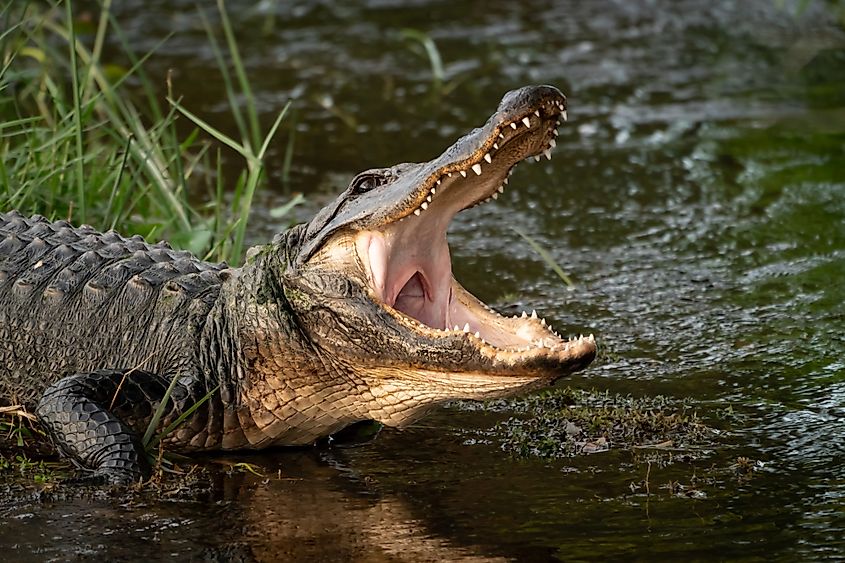
The Everglades is a unique ecosystem that offers unexpected sanctuary for Burmese pythons so very far from their native domain. Here, the sizable serpents can disappear into the seemingly infinite wetlands. They have no natural predators in South Florida (unlike back East where babies and mature pythons alike have to be on guard), but the murky waters and dense vegetation aid in their ambush hunting tactics. On that note, Burmese pythons are dietary generalists. They gobble up small mammals at unprecedented rates (almost to the point of extirpation), and when that's not enough, they are known to consume five-foot-long alligators. In 2022, researchers even witnessed a 15-foot female python swallowing a 77-pound white-tailed deer! Other protected nature scapes may offer comparable menus for off-shoot populations of pythons, but one incorrigible kicker exists north of the Everglades: winter weather.
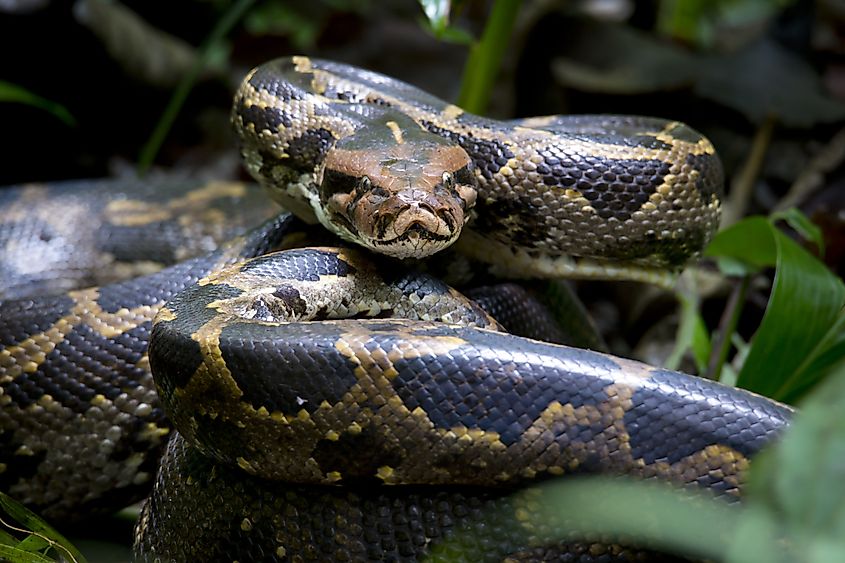
Perhaps the most important python-favoring asset of the Everglades is its year-round balmy conditions. Were any Burmese invaders able to migrate up to, say, the Florida Panhandle, they would have to contend with daily lows in the 30s and 40s (Fahrenheit) for months on end - far colder than anything in Southeast Asia. Yes, these hardy pythons can survive brief cold snaps (in fact, this is why they are often seen sunning themselves on concrete roads), but regular winters (modest as they may be) appear to be a limiting factor. With that said, a warming climate combined with the first hints of cold tolerance adaptations within their ever-propagating gene pool may eventually dissolve this natural barrier. Therefore, as per the suggestion of the USGS, it is conceivable that Burmese pythons may eventually establish themselves above Lake Okeechobee and perhaps as far north as southern Georgia.
While we're on the subject of The Peach State, some readers may recall a case of a Burmese python being shot and killed in Georgia's Charlton County in 2012. Given the proximity to Okefenokee National Wildlife Refuge, a swampland quite akin to the Florida Everglades, some concern was warranted. Thankfully, authorities determined that this was, yet again, a case of a former pet being released into the wild (Georgia, too, has since banned private ownership of such snakes as a prevention strategy). No known breeding populations currently exist in Georgia or any other state beyond Florida.
Parting Thoughts
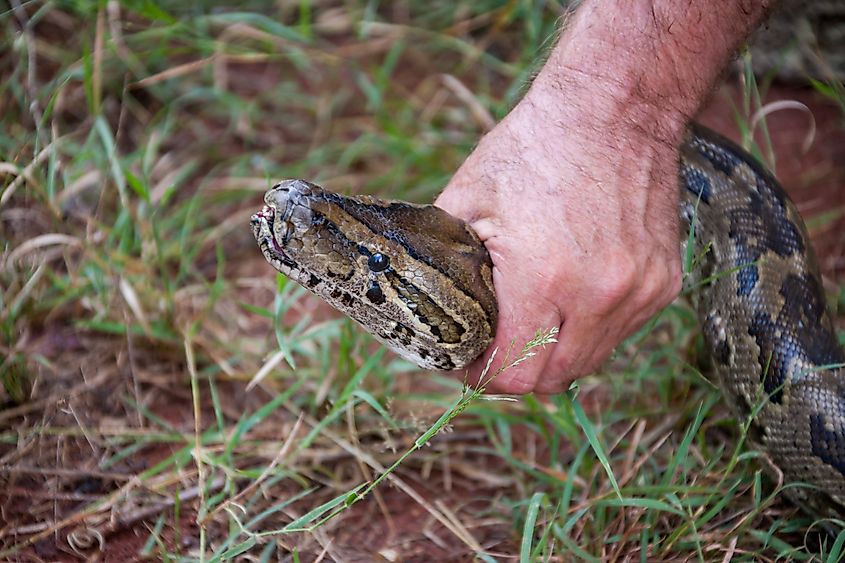
Even though Burmese pythons may not flee The Sunshine State anytime soon, researchers predict that over the next decade, they will work their way more frequently into urban areas. South Florida residents need not worry for their own safety, as python attacks against humans are almost unheard of, but if these migrations do occur, local wildlife (including pets) would be faced with a formidable foreign predator. If you spot a Burmese python (look for dark blotches overlying a tan body; it's one of the biggest snakes in the United States), be sure to alert the authorities. Florida has set up the "I've Got One" system for this occasion. Just download the app, visit IveGot1.org, or call 1-888-IVE-GOT1).











